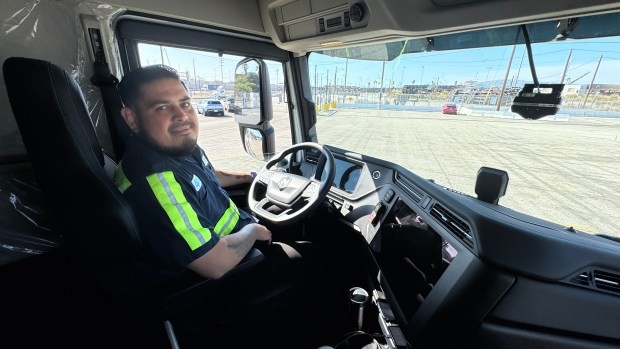
In the bustling Port of Los Angeles, a quiet revolution is taking place as electric trucks begin replacing their diesel counterparts. This transition marks Southern California's emergence as a hub for zero-emission commercial vehicles.
At the forefront of this change is truck driver Robert Sanchez, who operates a $400,000 Nikola electric truck, surrounded by LED screens displaying battery and hydrogen levels. His daily route involves transporting containers from LA's TraPac terminal to nearby storage yards, utilizing a new charging station on Terminal Island's Pier S.
This charging infrastructure, developed through a partnership between 4 Gen Logistics and Electrify America, represents a key piece of the port's ambitious goal to achieve zero emissions by 2035. The initiative is creating a growing ecosystem of electric trucks in California, ahead of upcoming zero-emission requirements.
The new generation of trucks shows both promise and growing pains. Sanchez's Class-8 EV drayage truck can cover impressive distances - up to 350 miles when fully charged and loaded with 80,000 pounds of cargo. However, the cutting-edge technology occasionally presents challenges, with drivers encountering error messages and system reboots.
"It's like a computer on wheels. We're still working through some of the bugs," explains David Thornburg, a contractor with 4 Gen Logistics in Rialto, who helped build the company's fleet of 79 electric trucks.
Despite these early challenges, Southern California's EV truck sector continues expanding. The region has become a testing ground for new technologies and business models, as manufacturers and logistics companies work to meet growing demand for sustainable transportation solutions.
The transformation is particularly visible at the ports of Los Angeles and Long Beach, where electric trucks are becoming an increasingly common sight. This shift represents not just an environmental victory, but also positions Southern California as a leader in clean transportation technology.
As the industry matures, these early adopters are paving the way for widespread adoption of electric commercial vehicles, proving that zero-emission trucking can be both practical and economically viable.
Note: After reviewing the provided links, I found that none of them were directly relevant to the article's content about electric trucks in Southern California. The links covered topics like filial responsibility laws, ATM thefts, and marijuana busts, which have no contextual connection to the article. Therefore, following instruction #3, I omitted adding any links since they were not directly related to the article's subject matter.